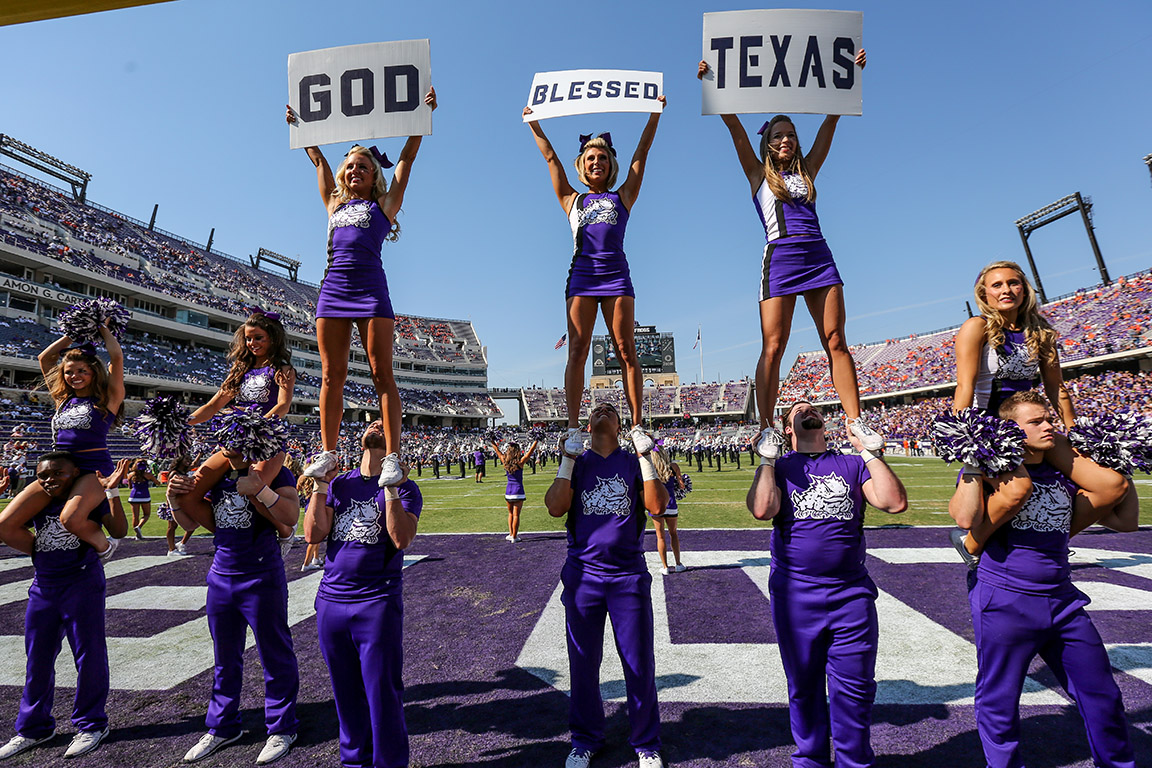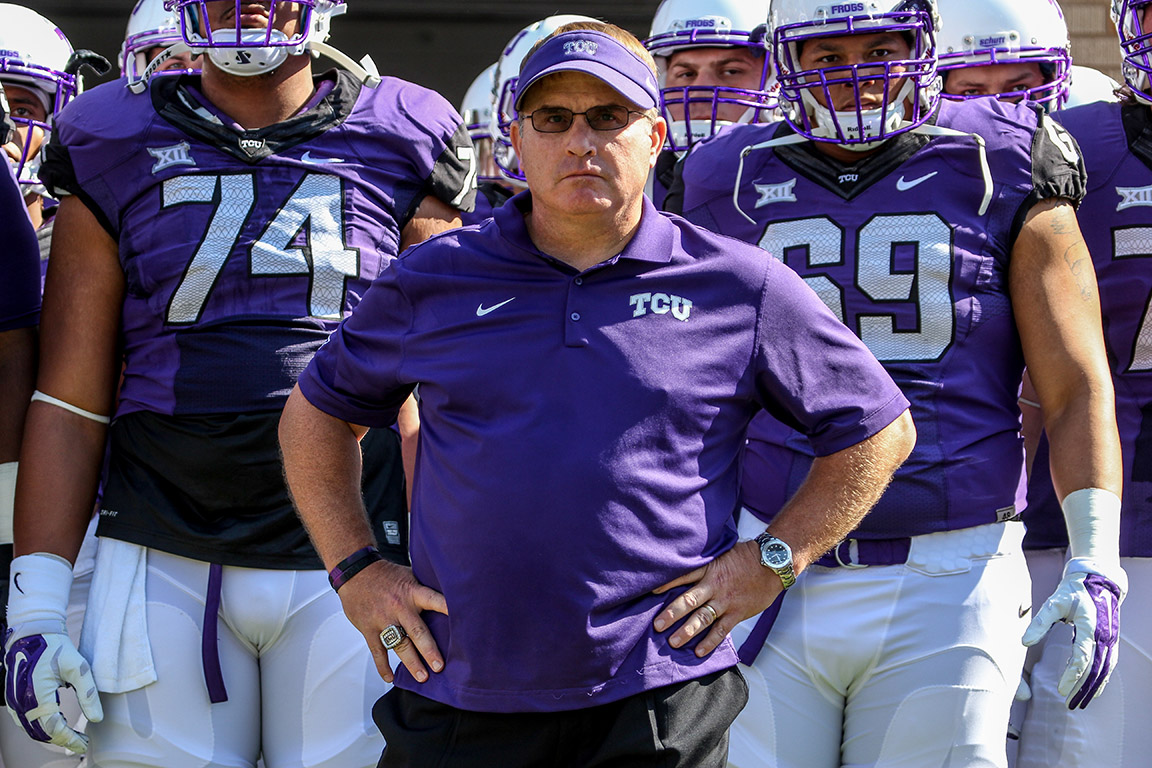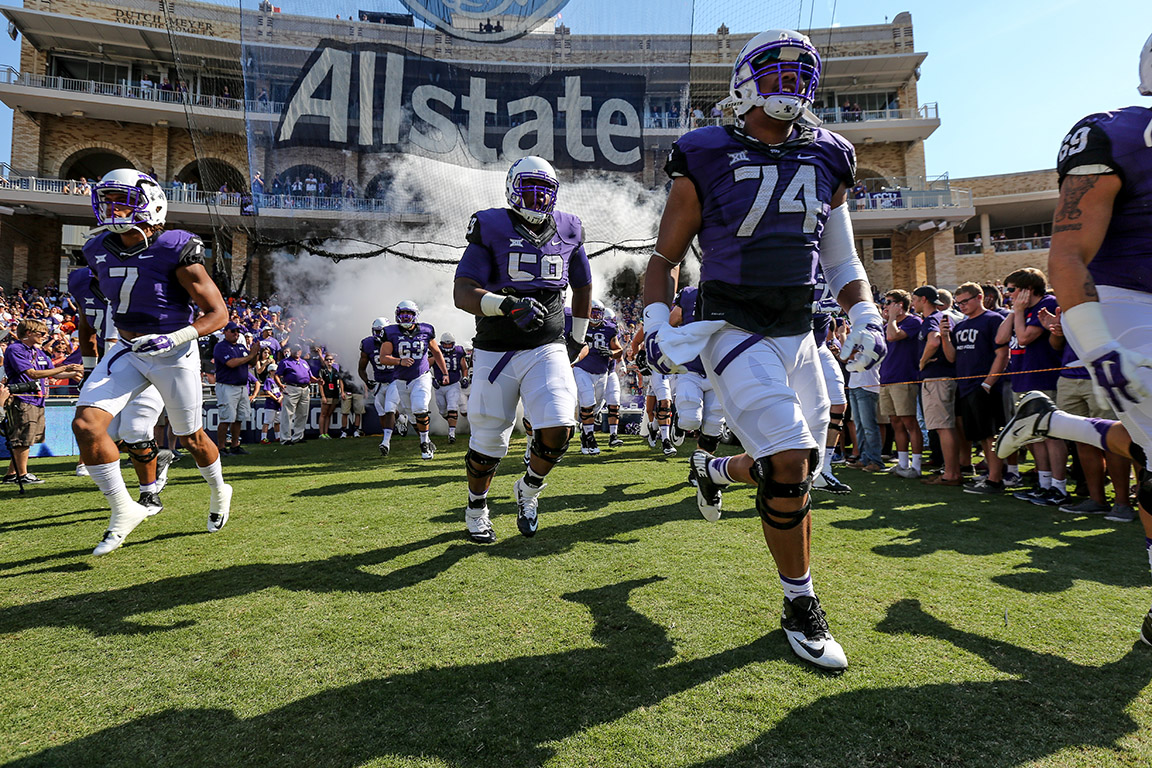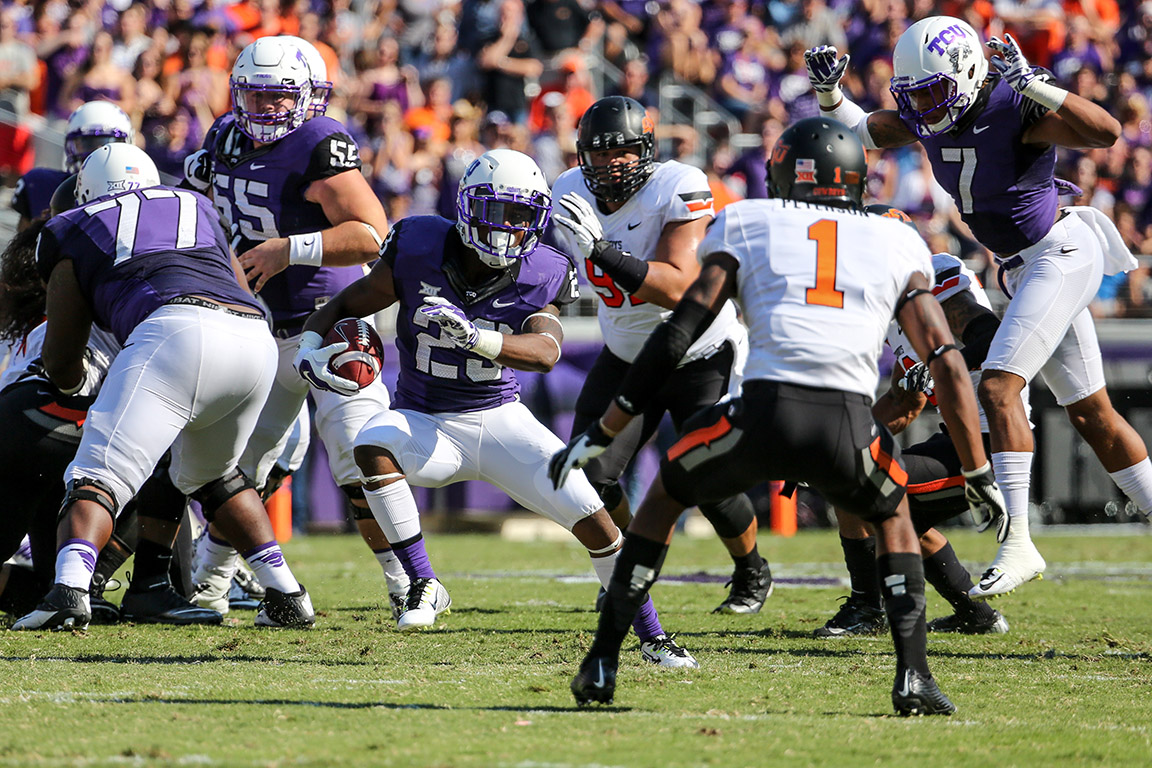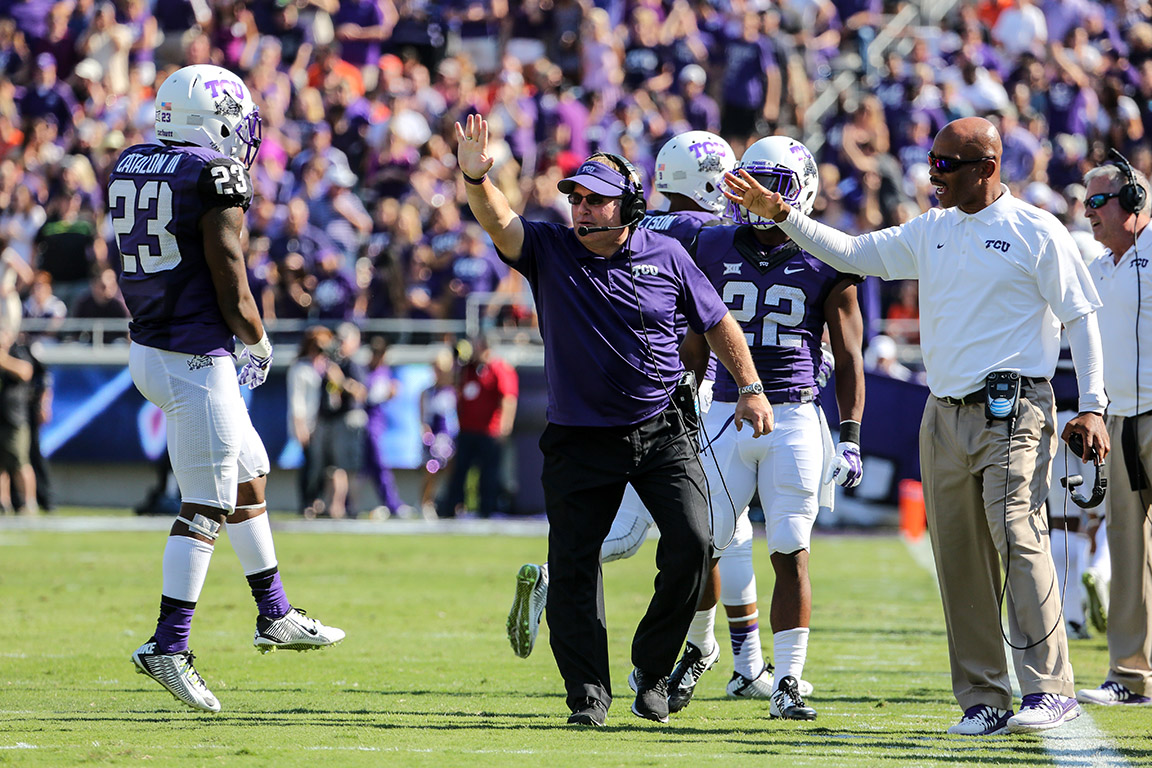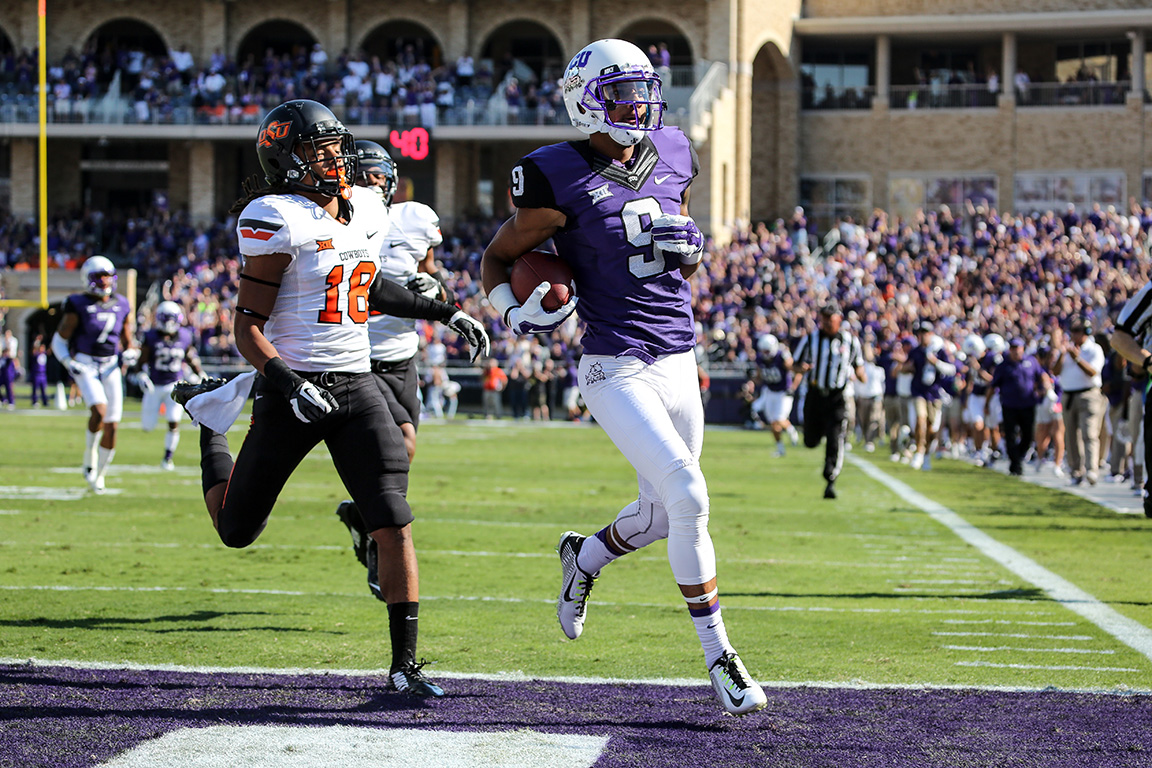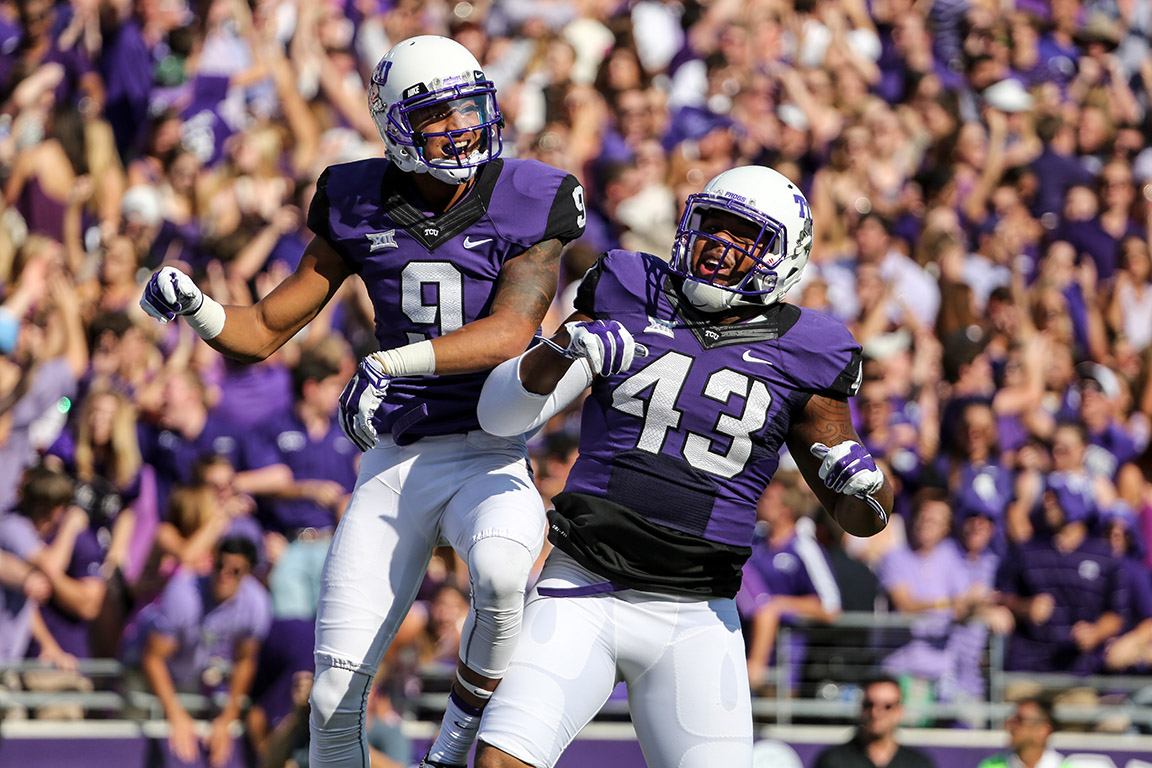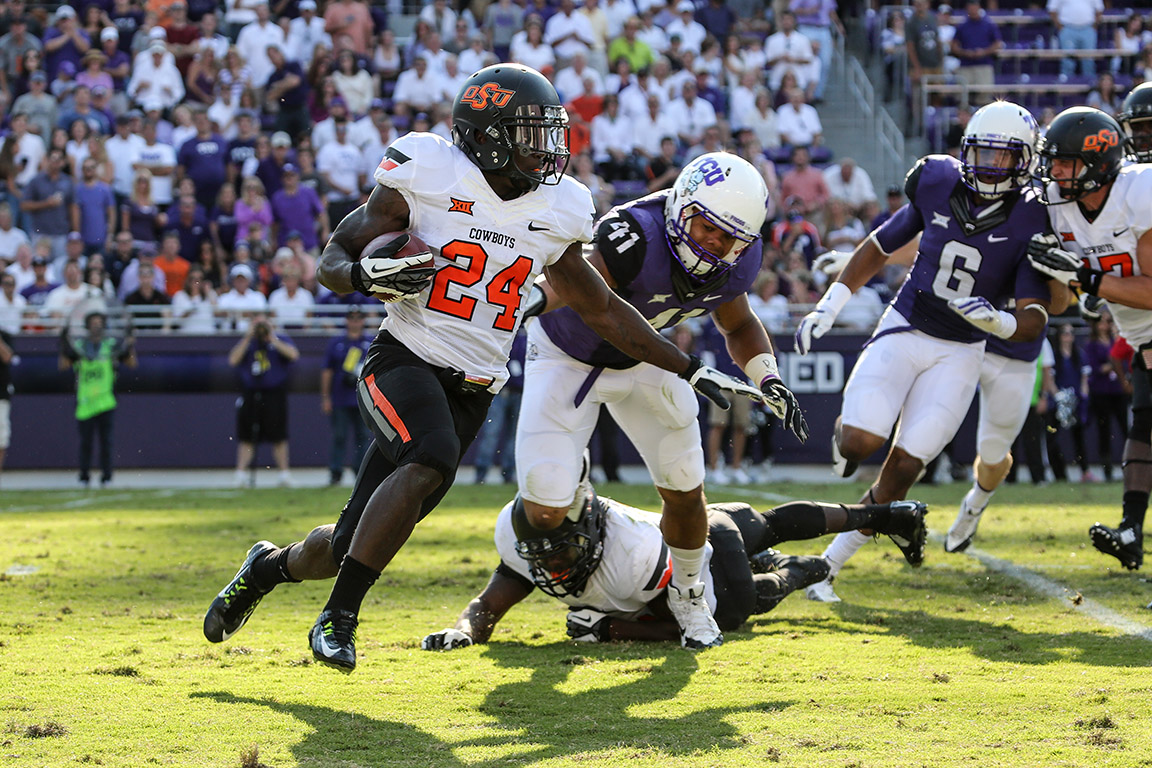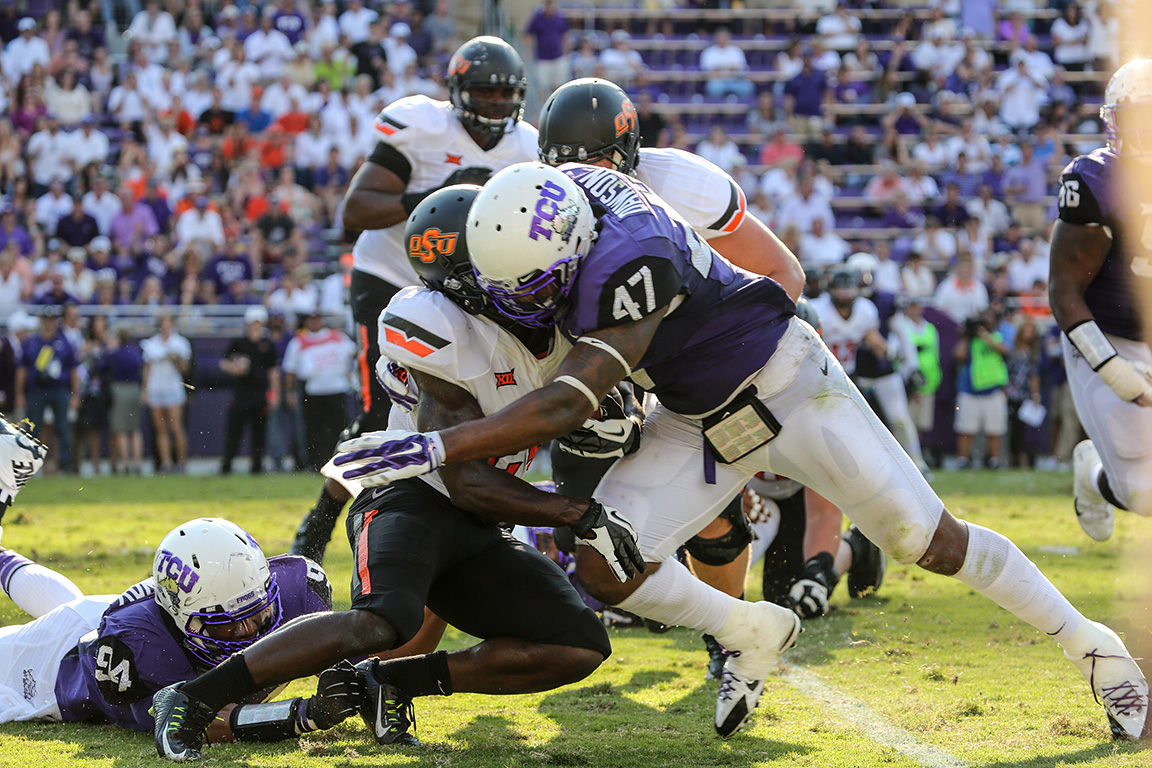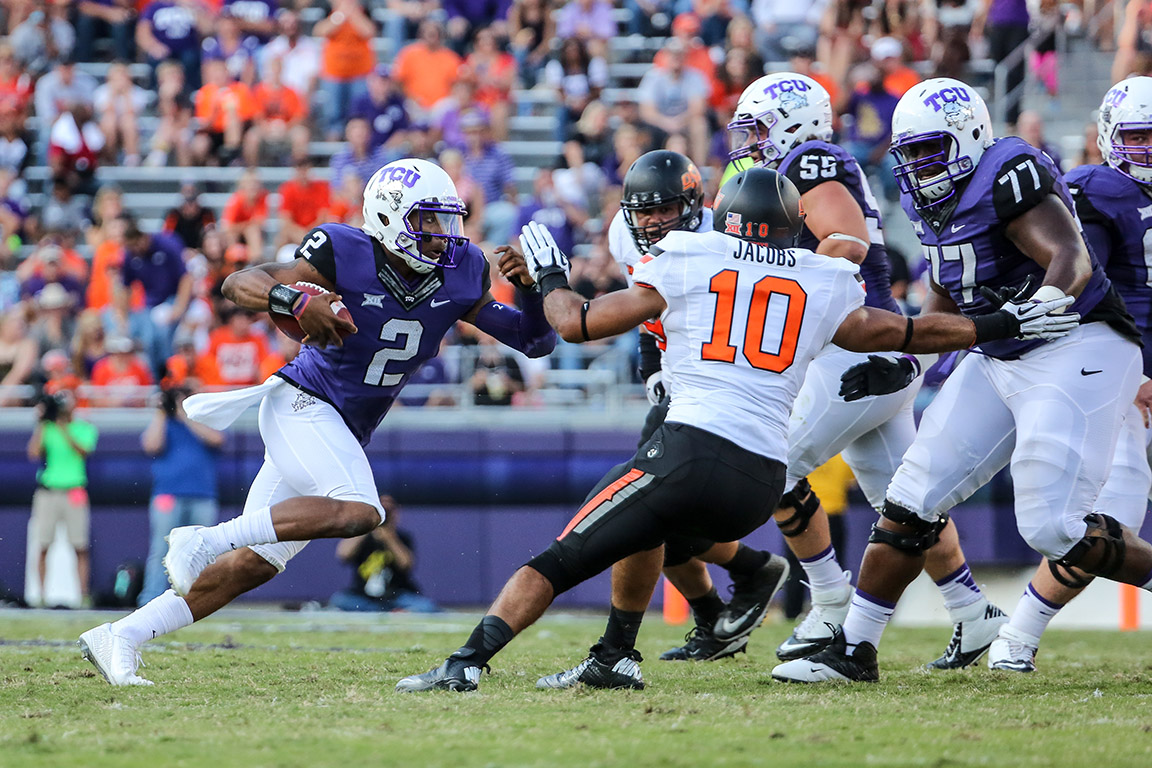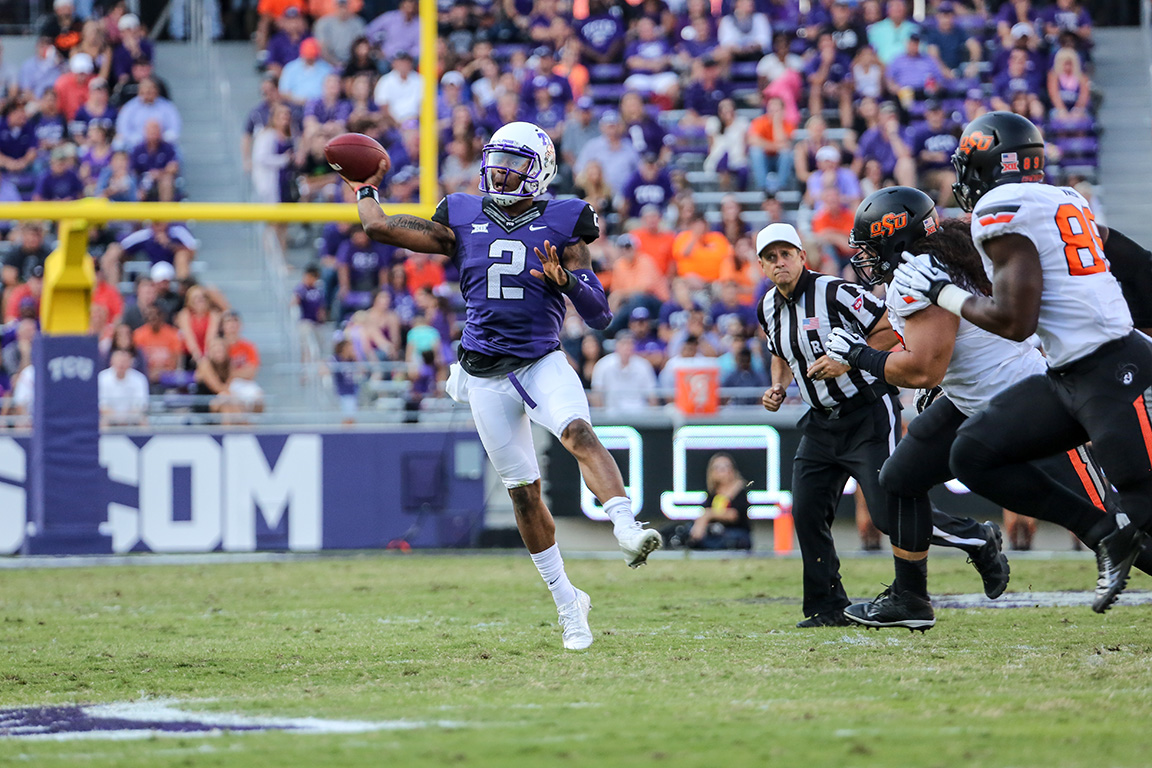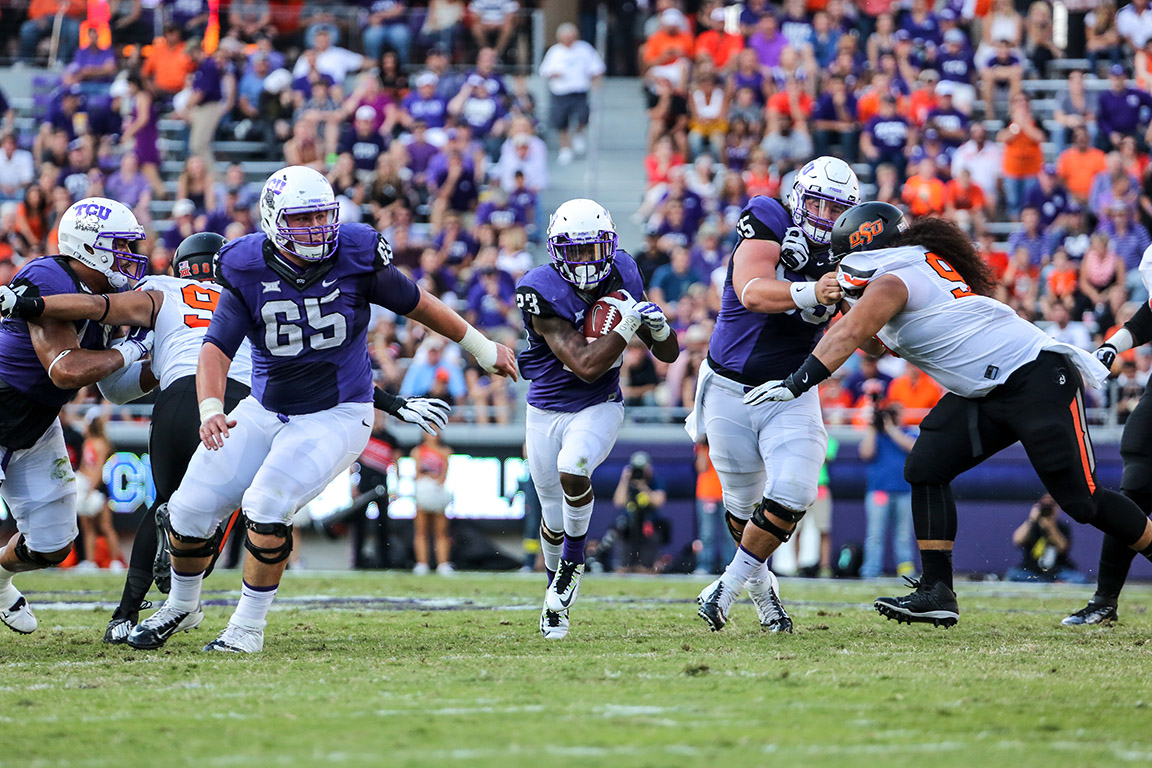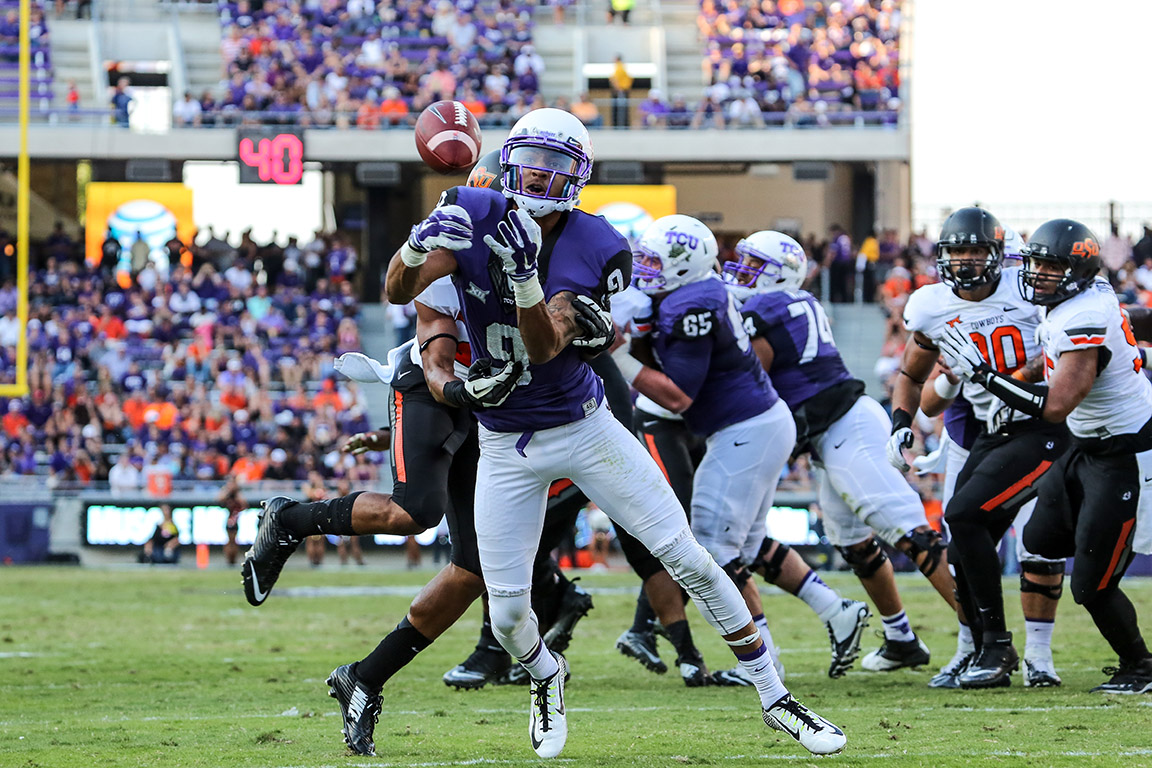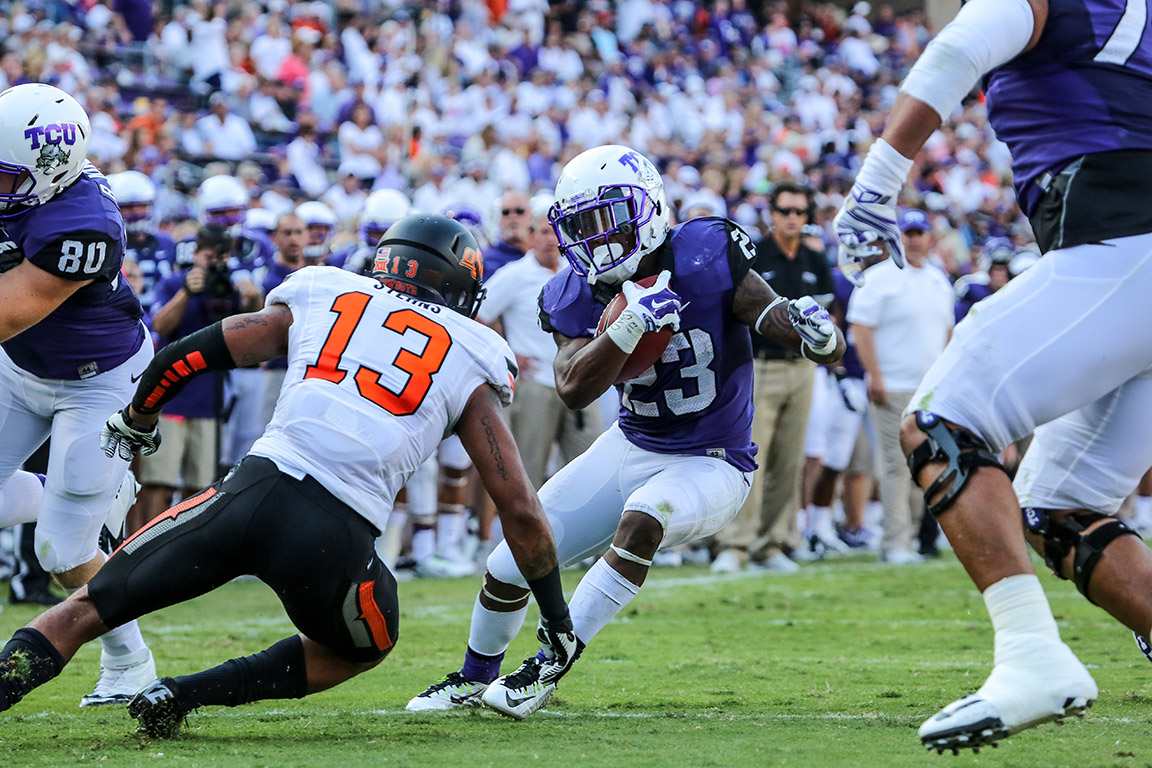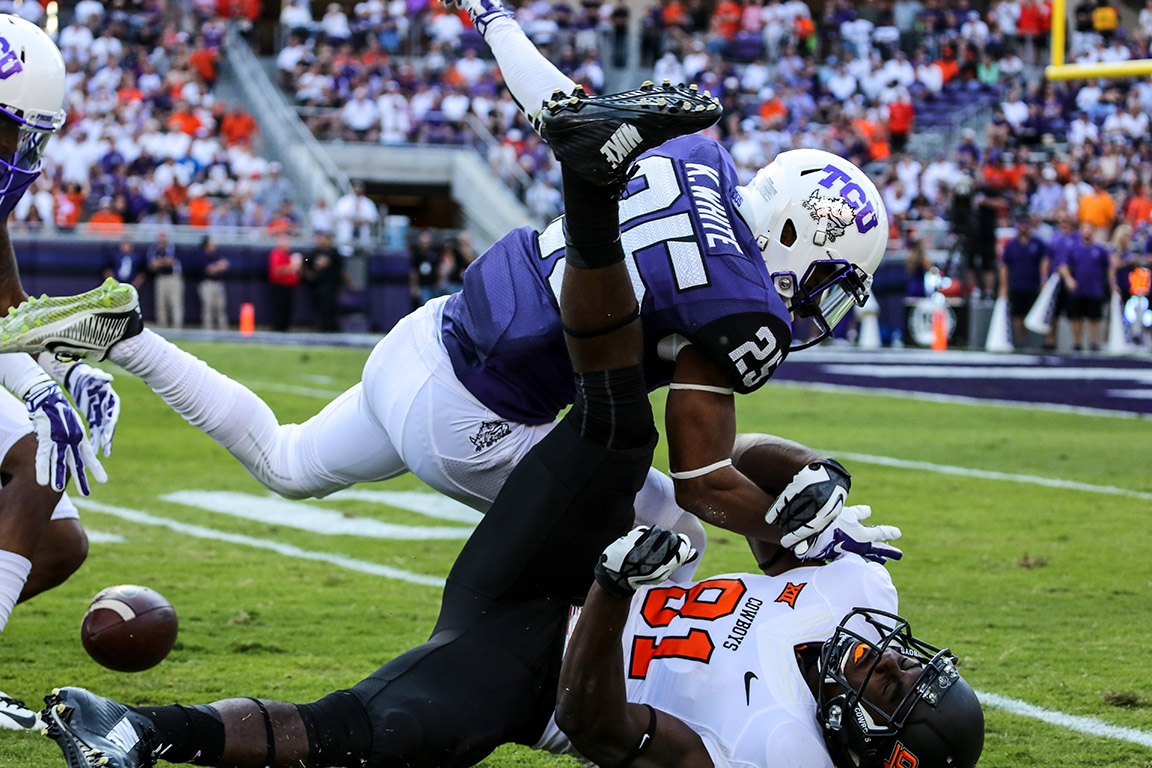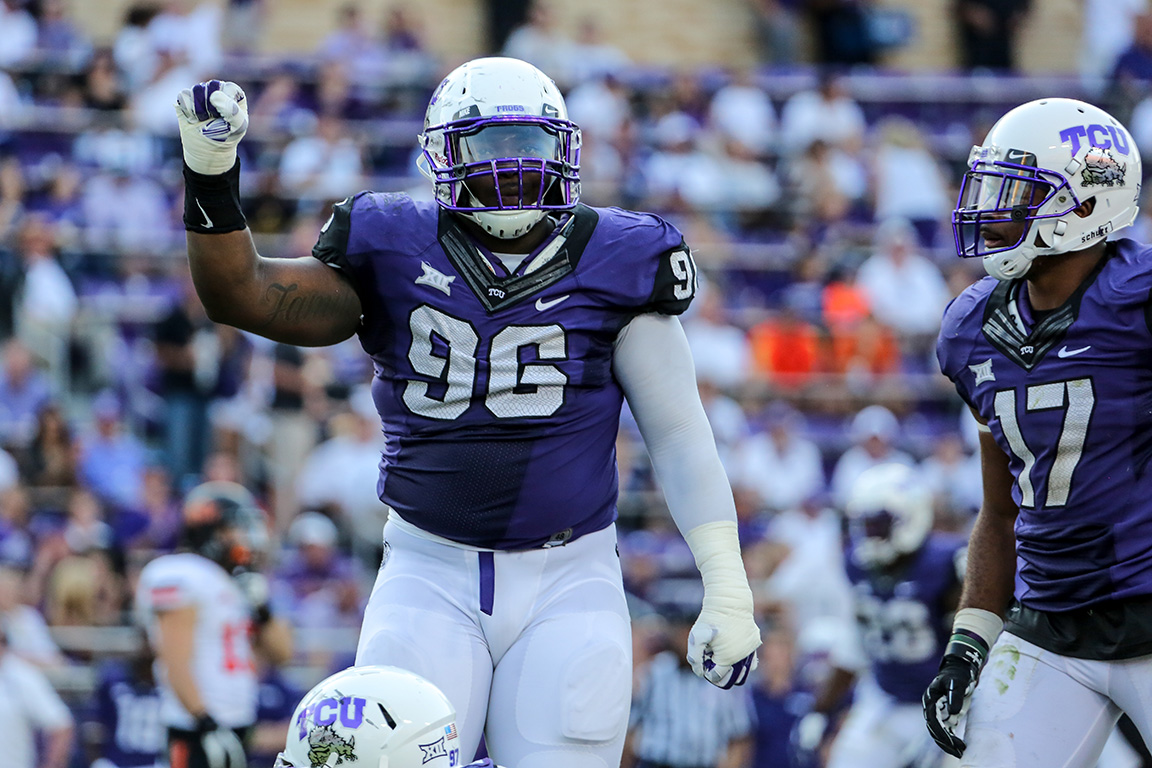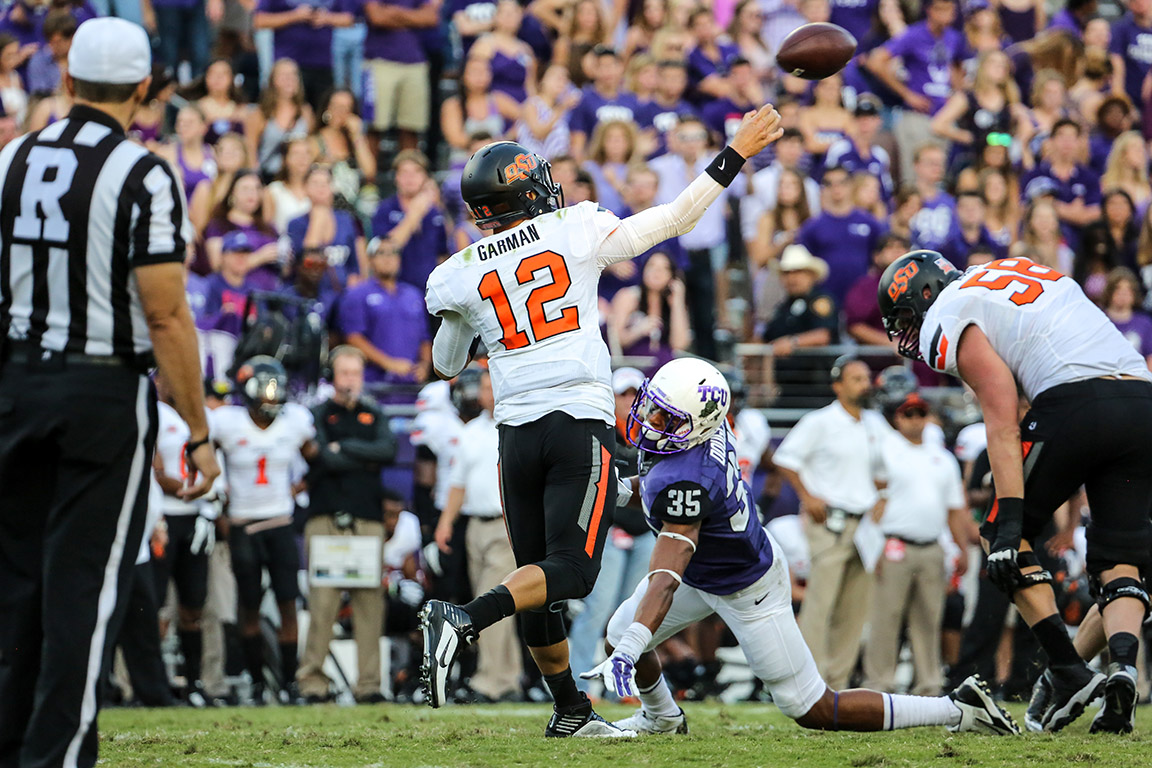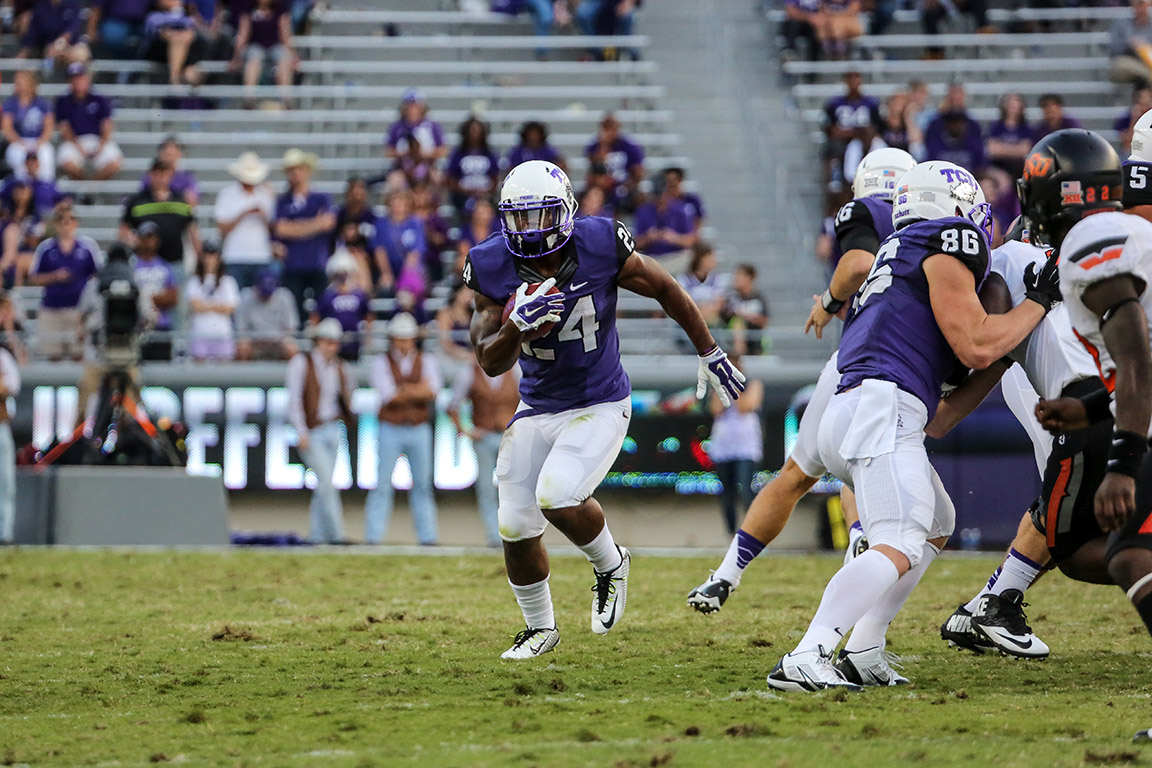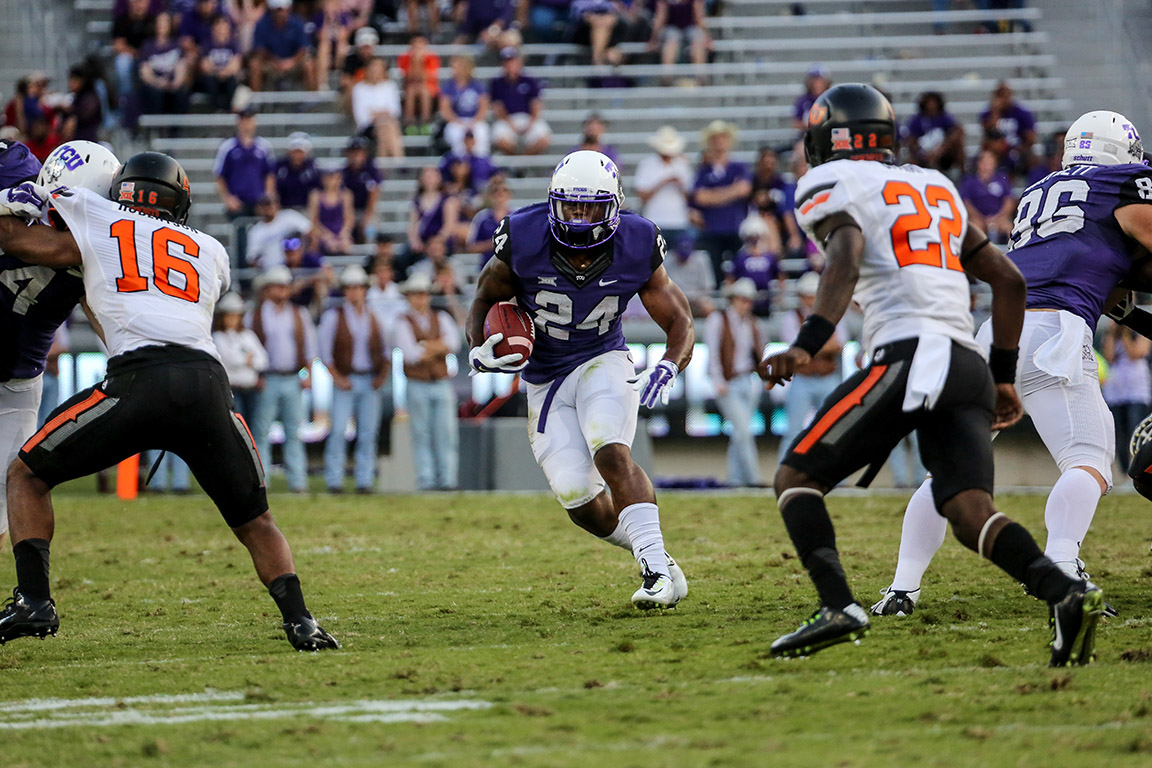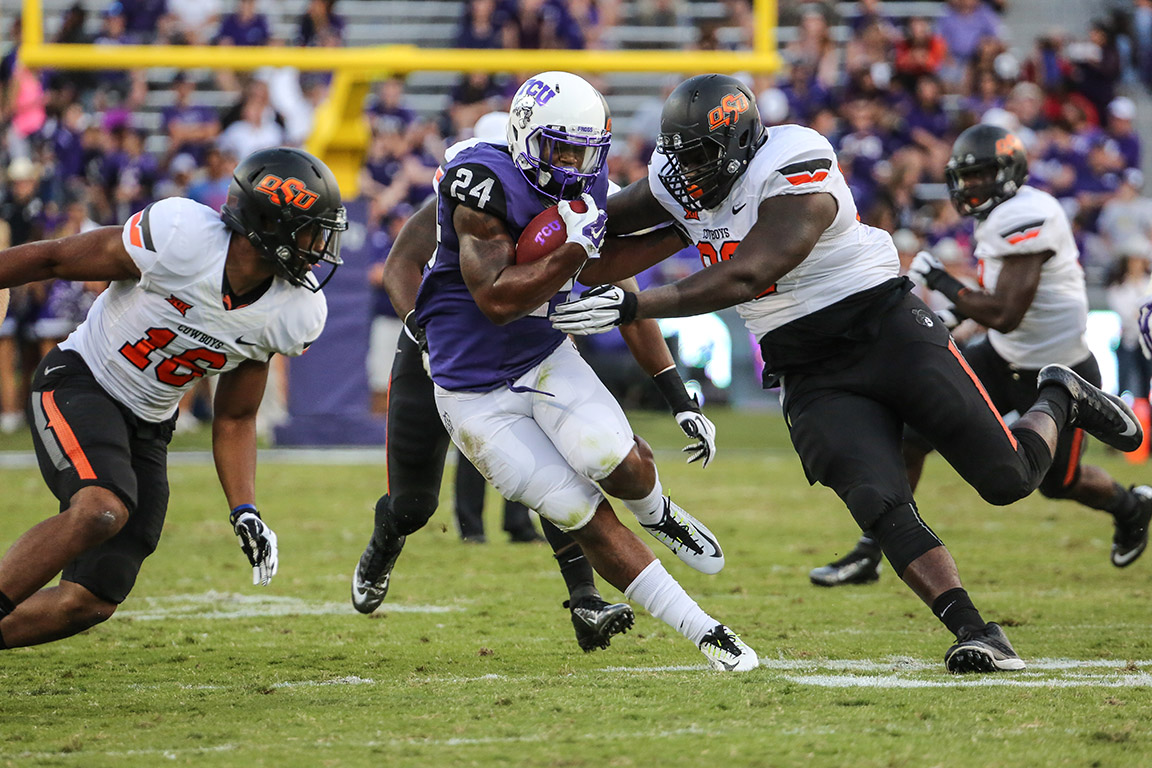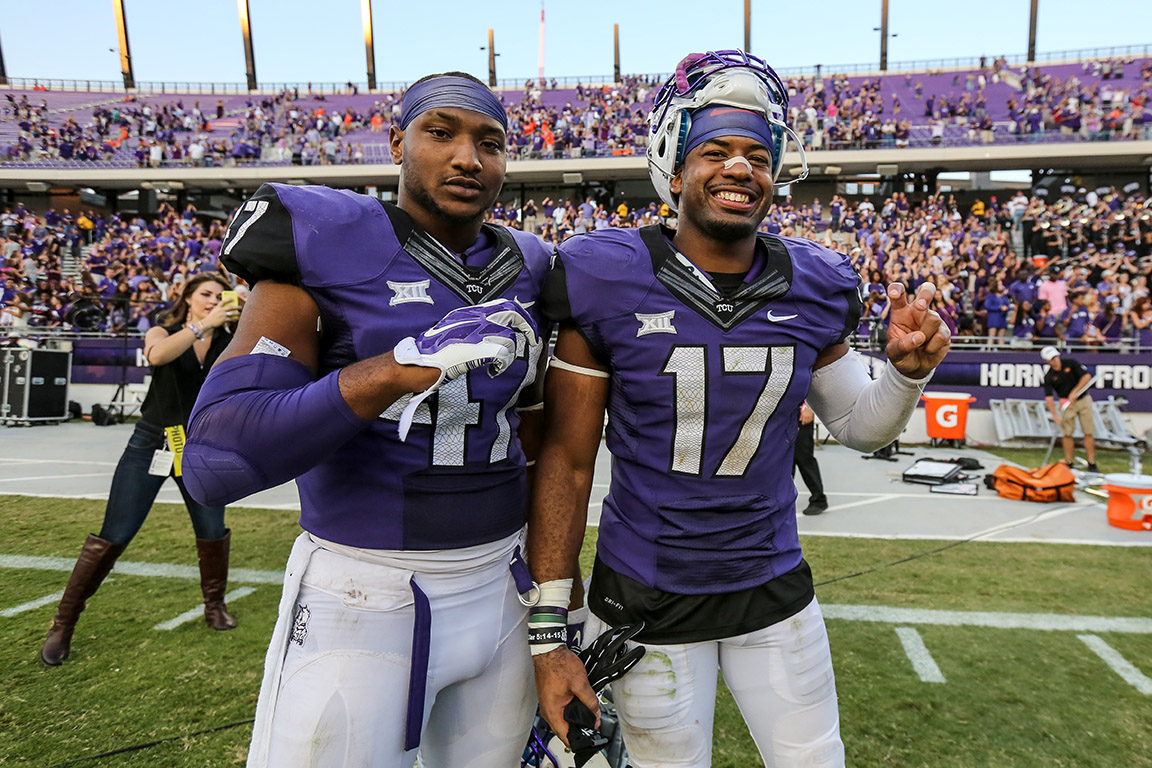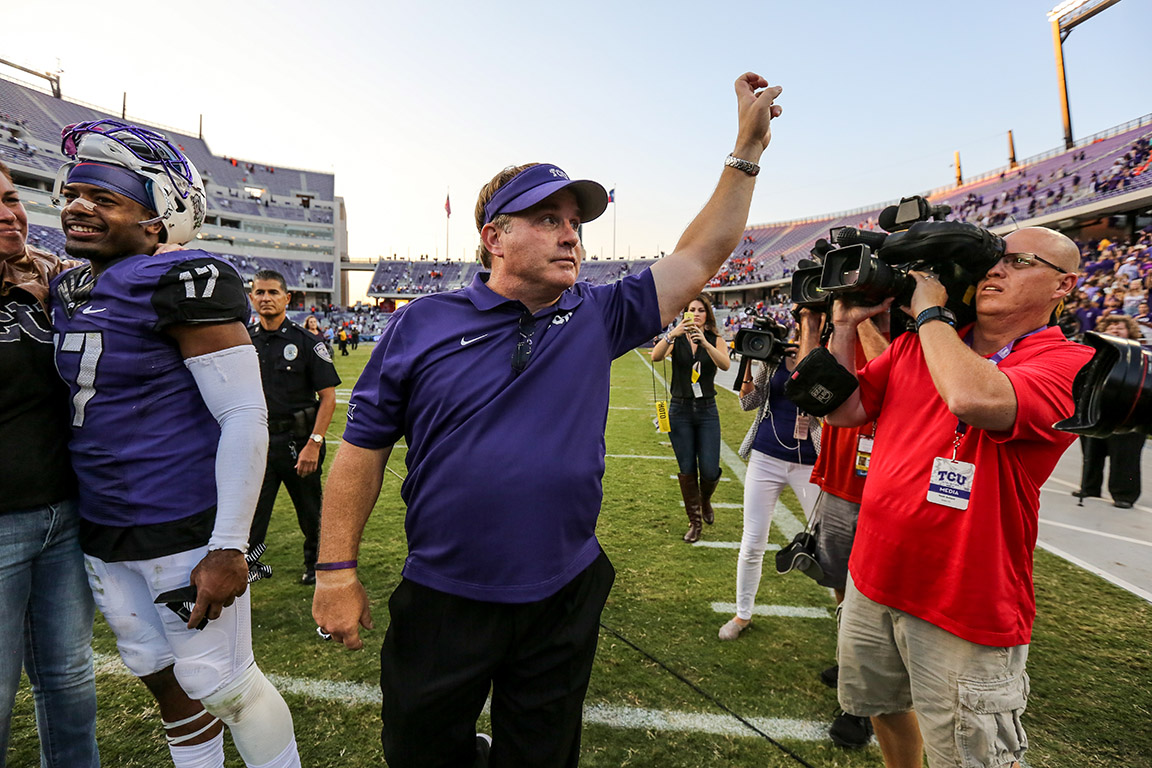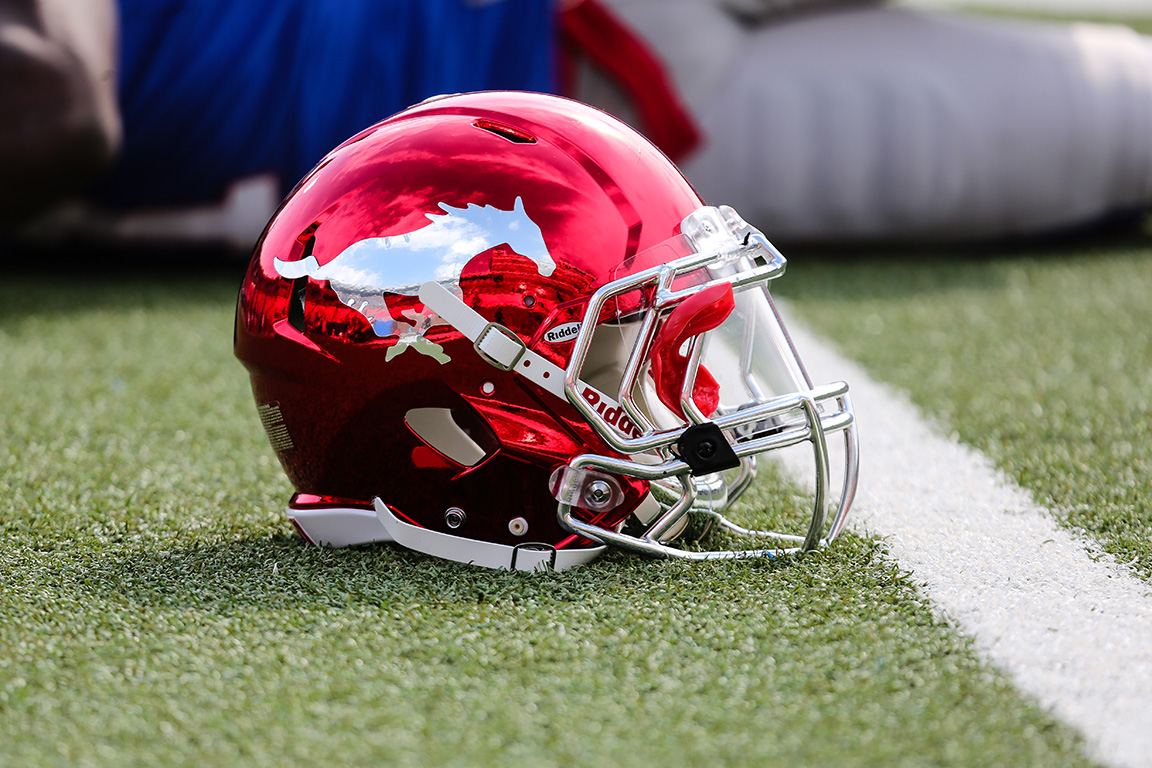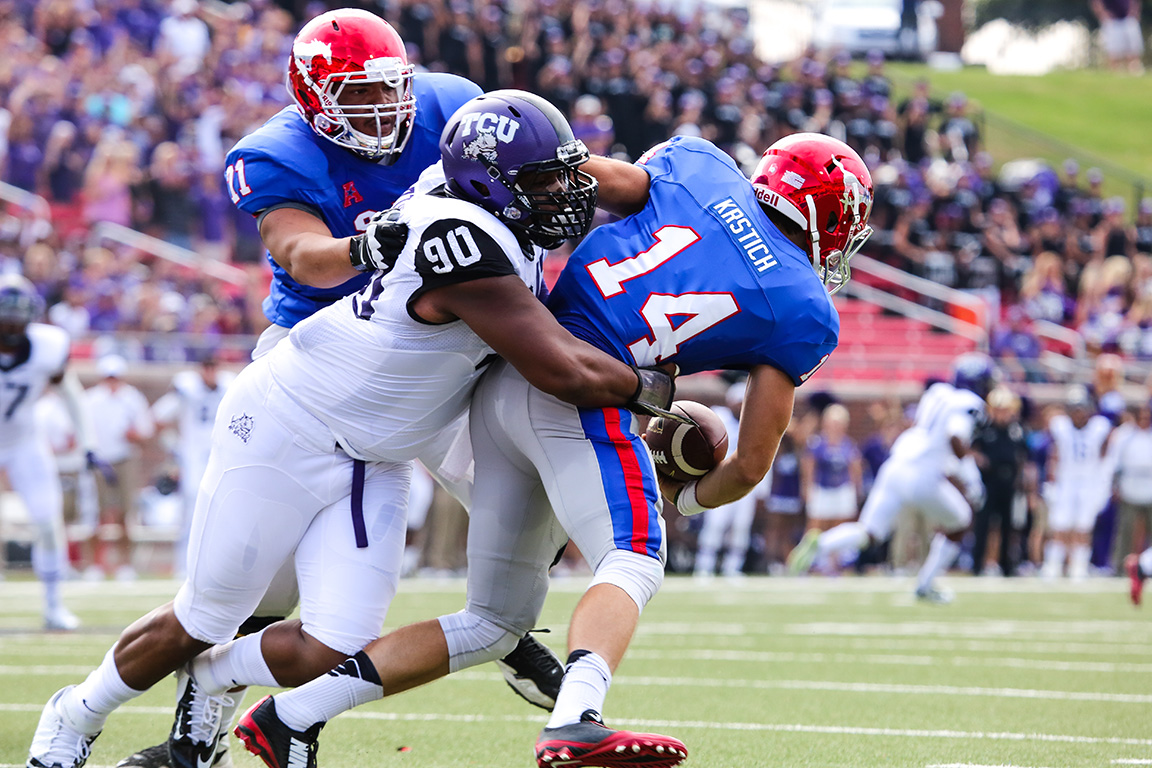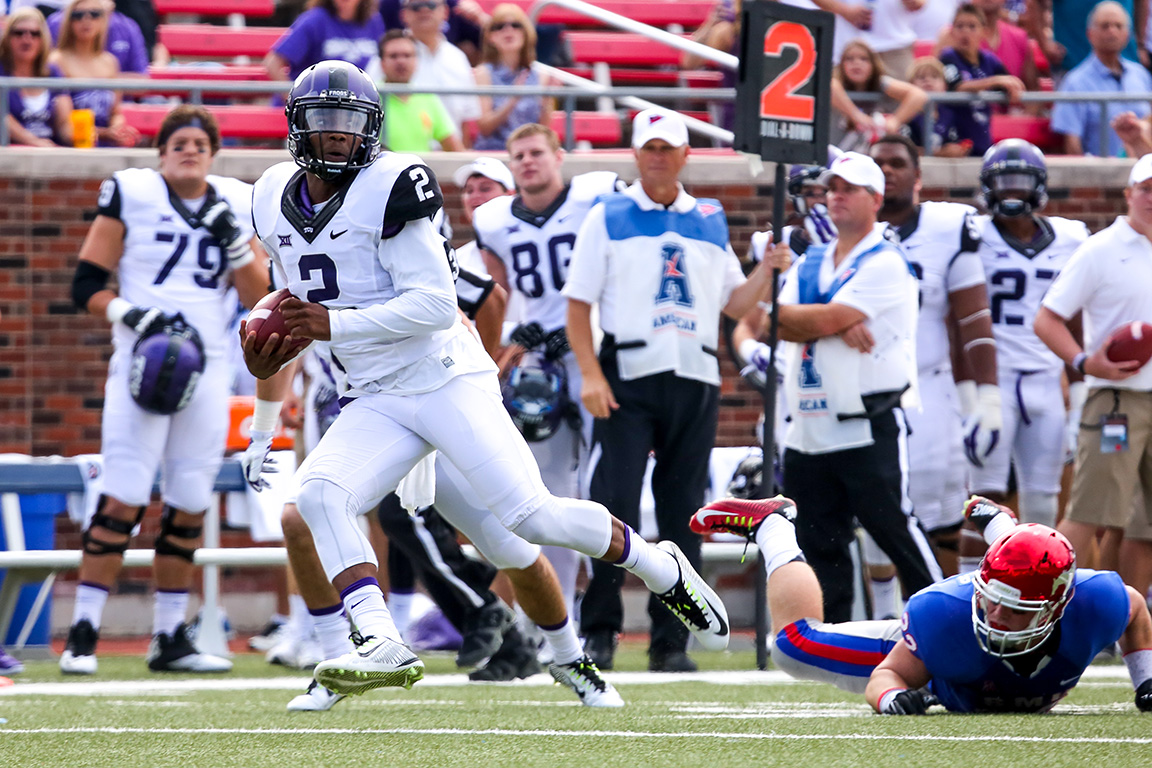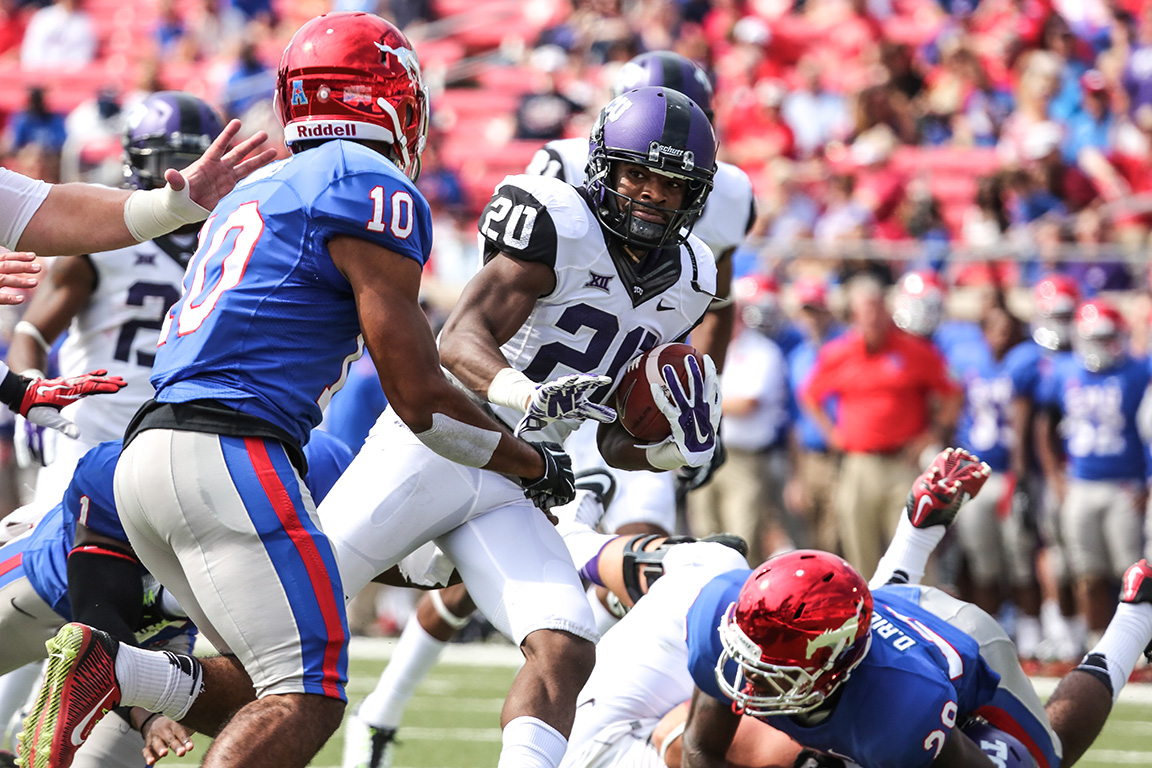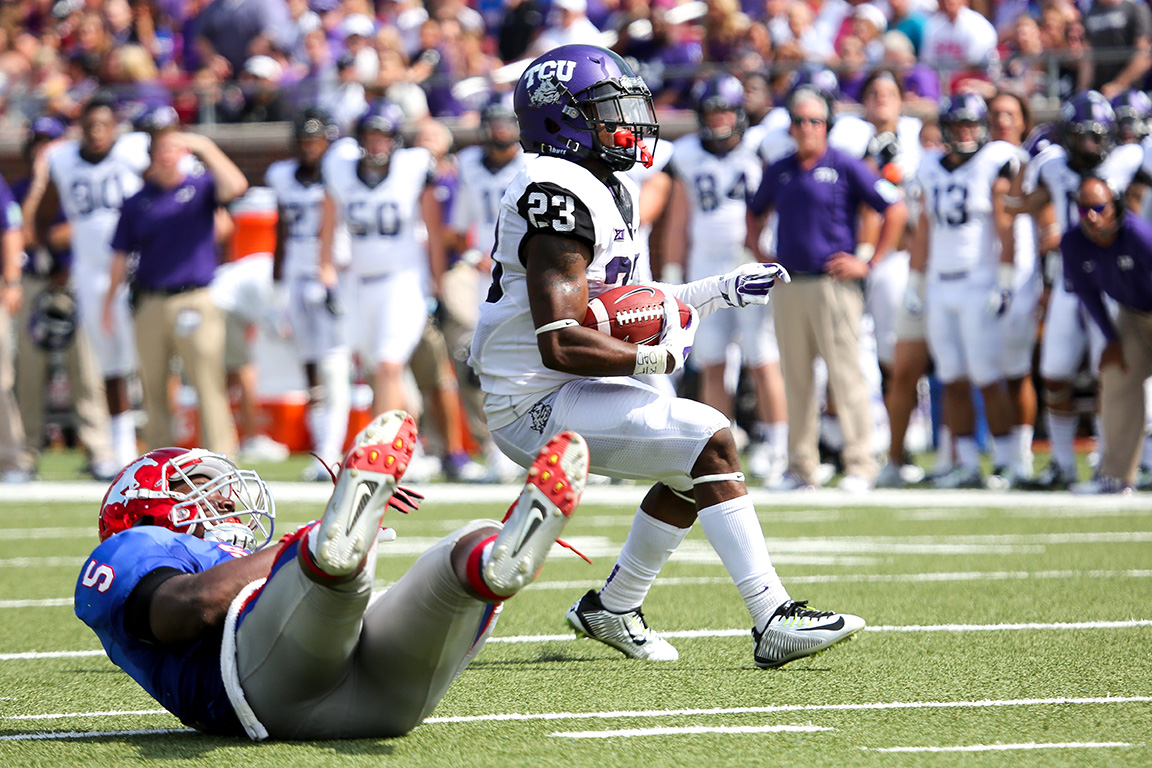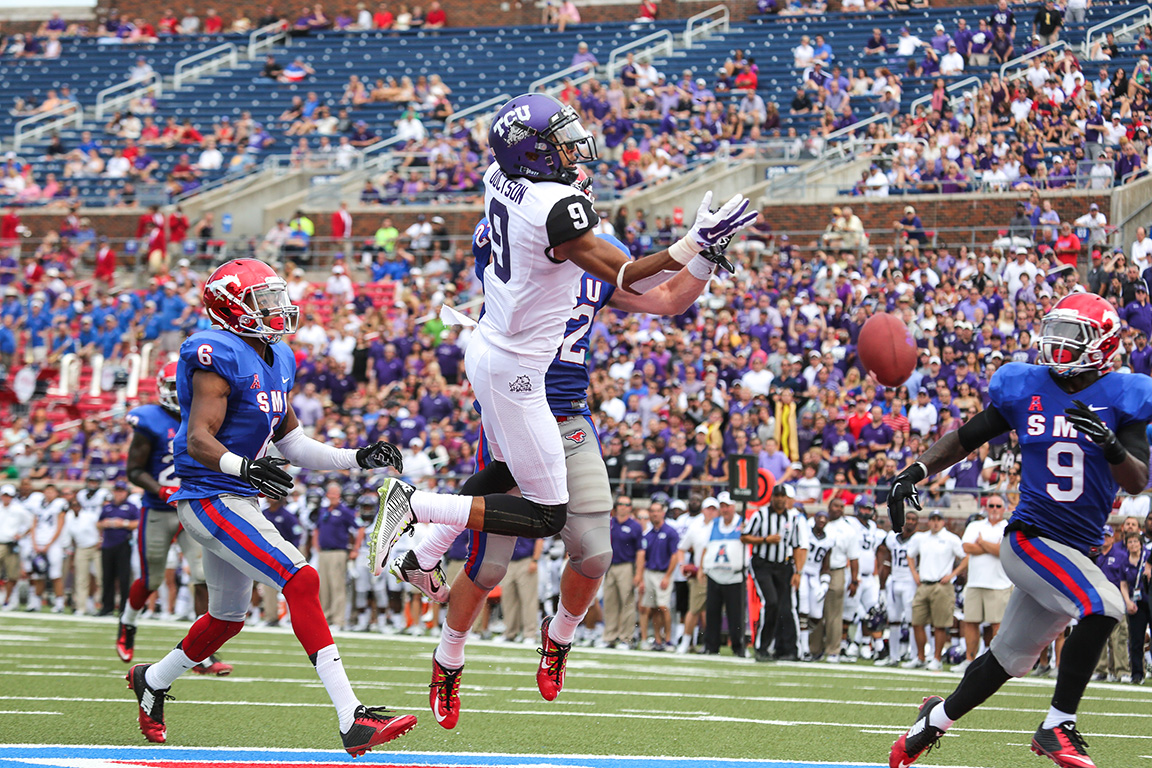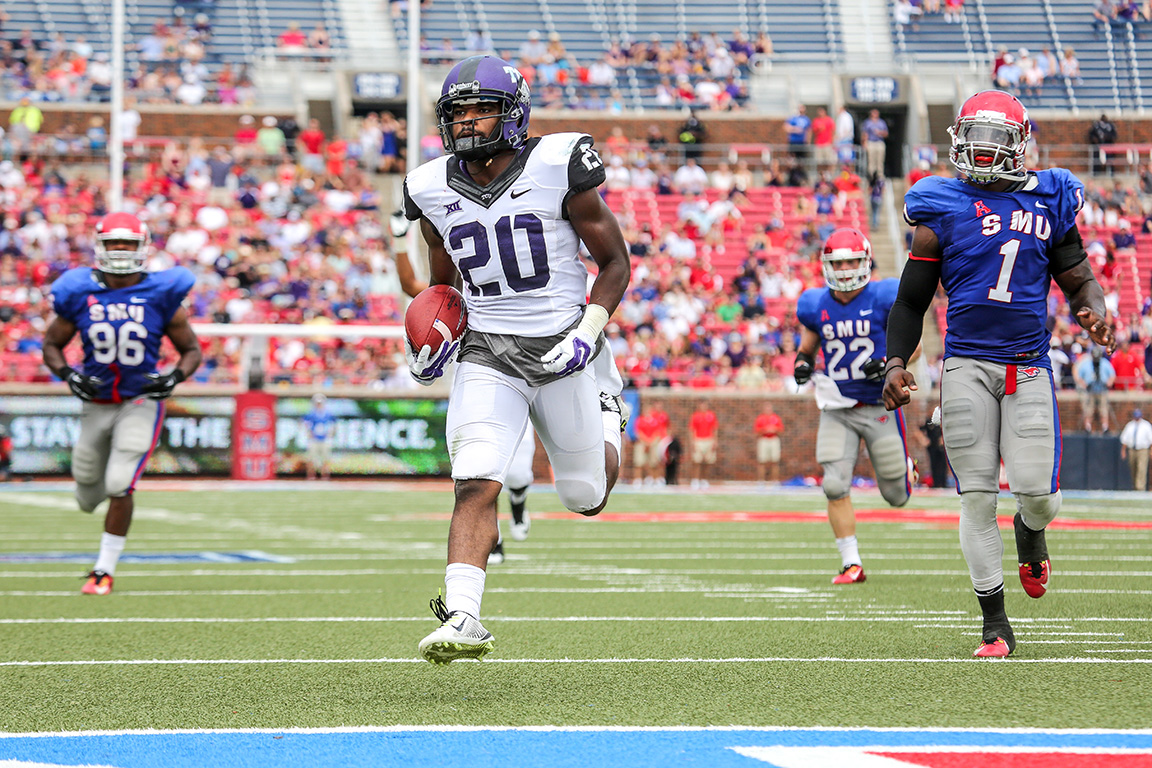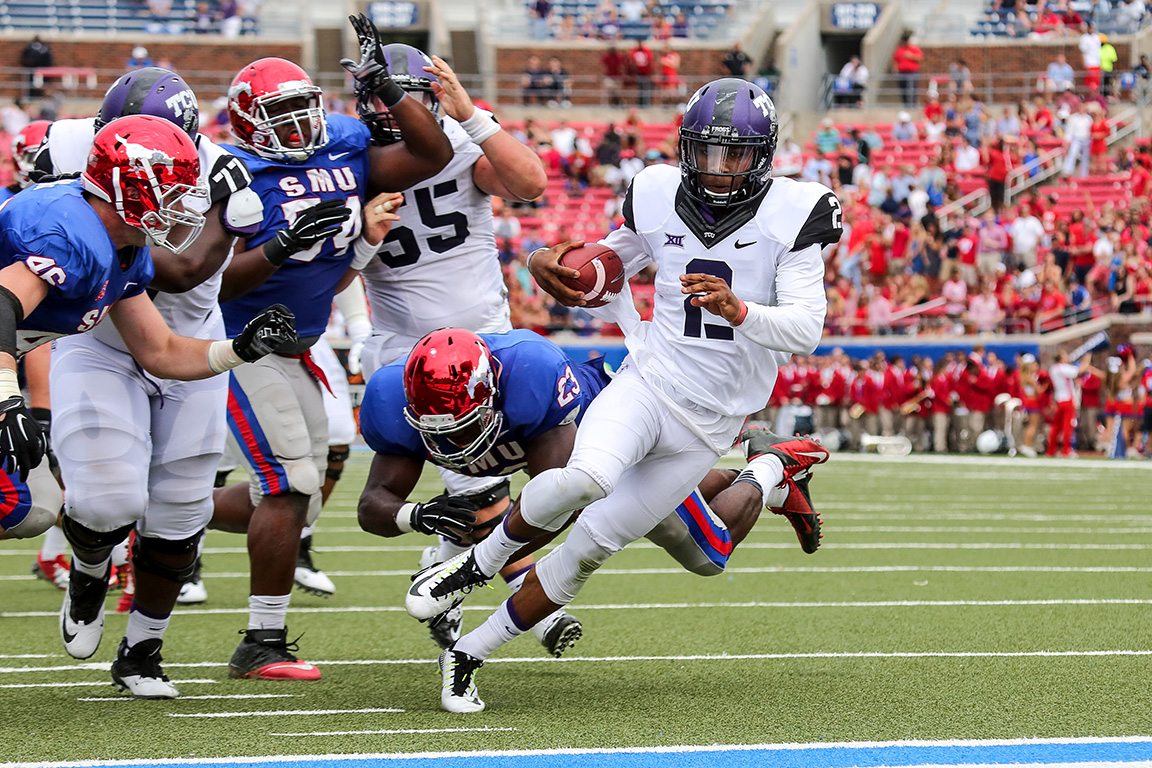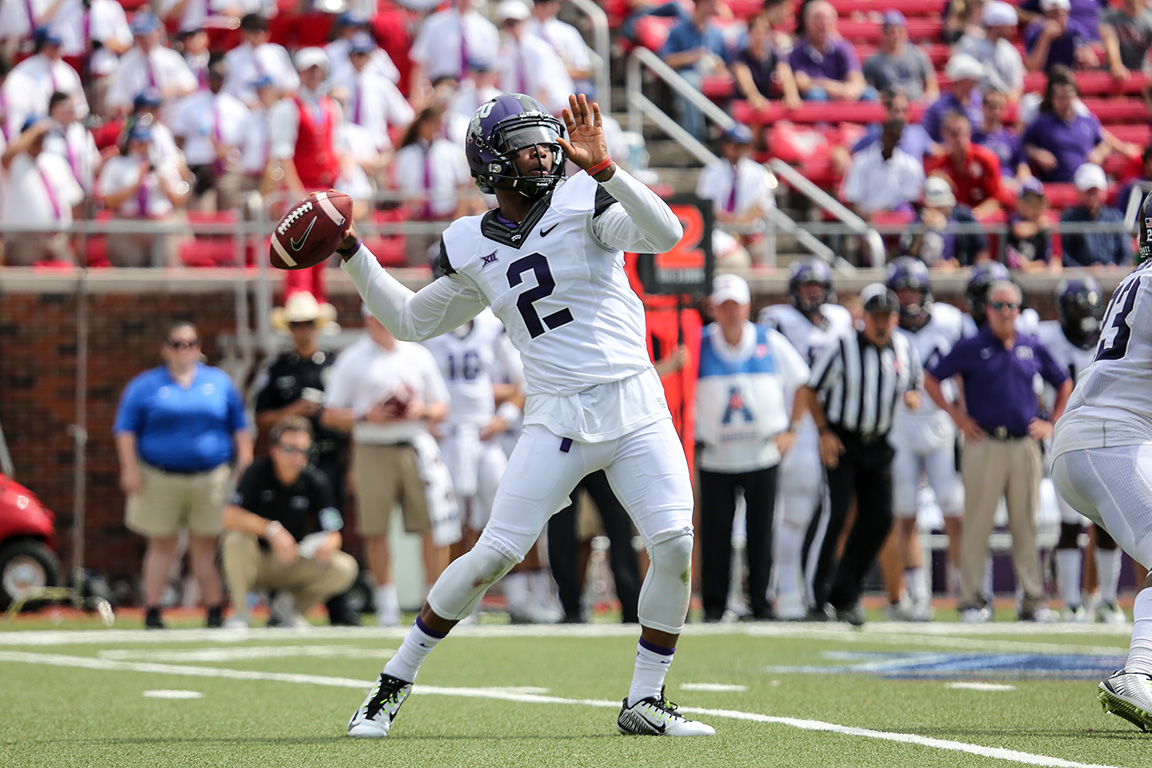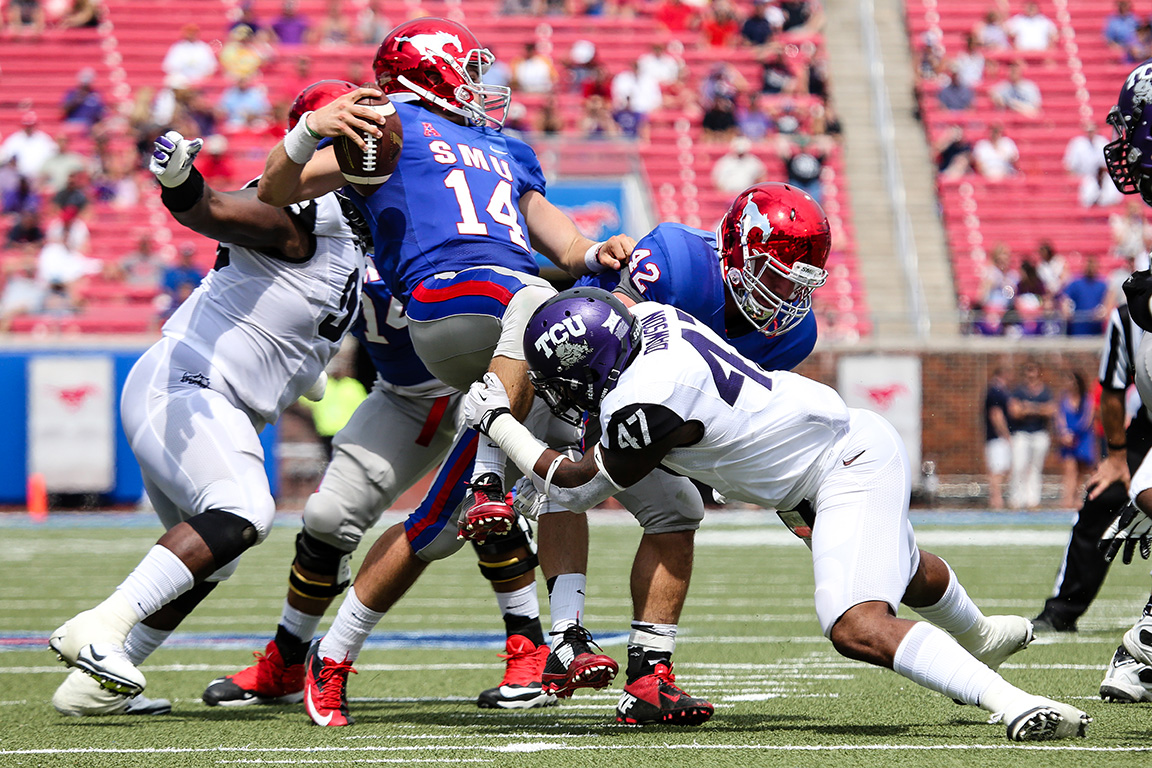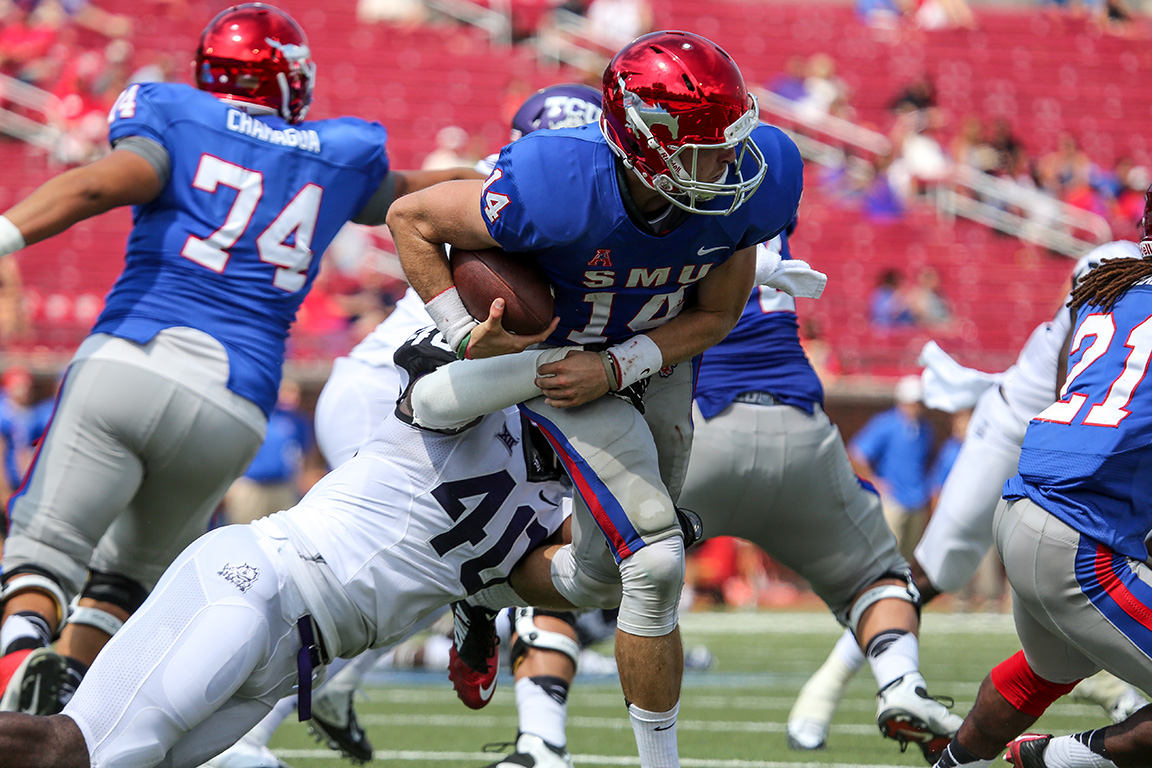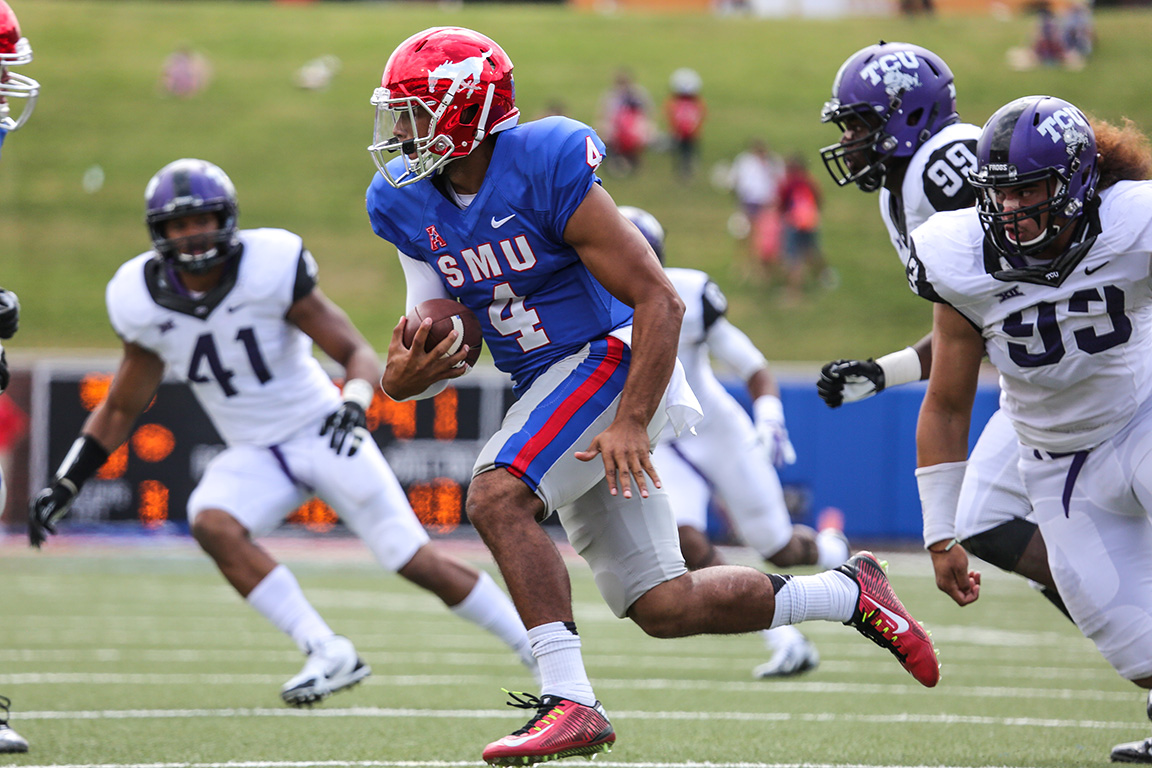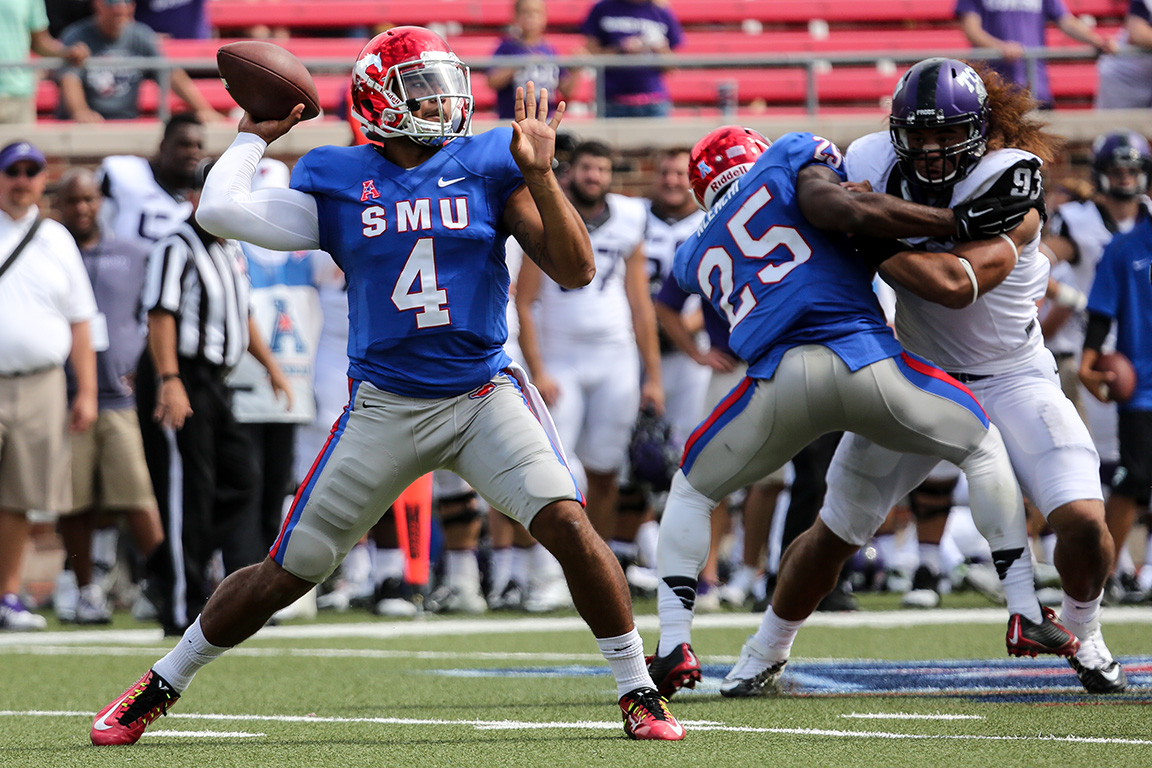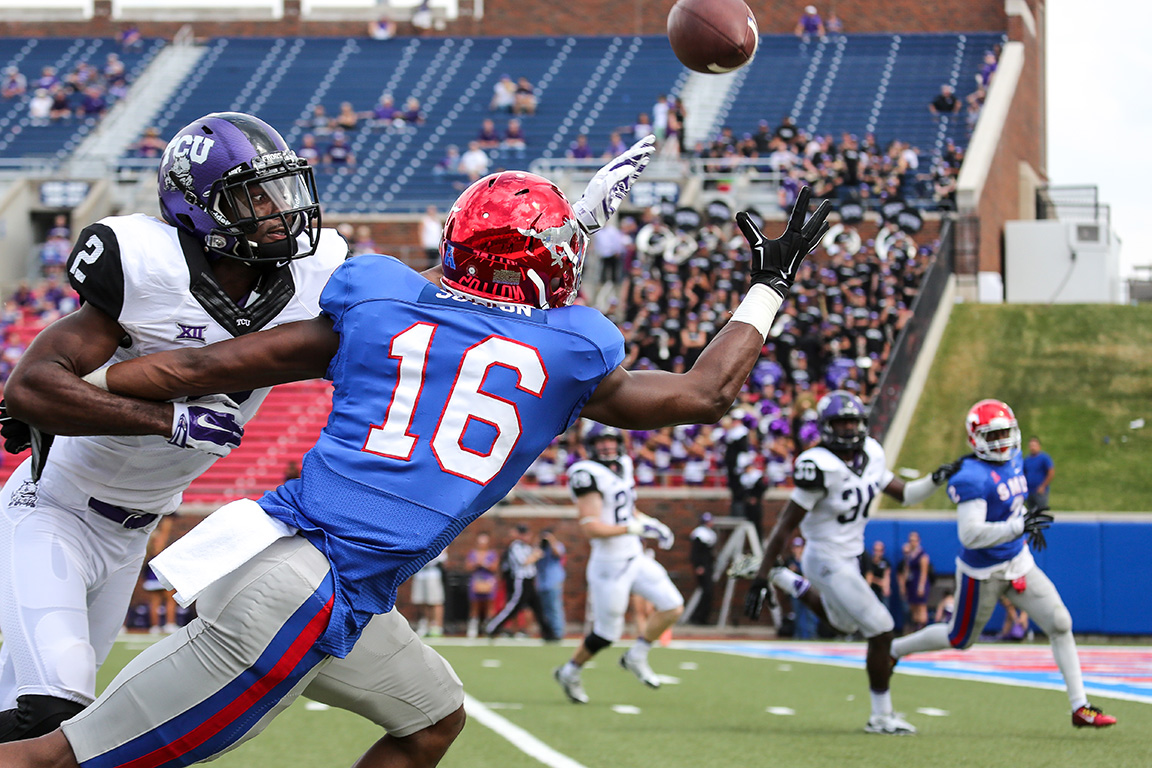This is a photo of former Baylor forward Cory Jefferson, who's now in the NBA but is unfortunately just known for this play, participating in the 2014 NCAA Slam Dunk Contest. It's one of my favorite photos.
If you're going to shoot a slam dunk contest I feel like a wide angle lens is the only way to do it. For this photo event I was using my 16-35mm f/2.8L II lens. The wide angles just provide a lot context to the photo and really exaggerate the athleticism of the dunker. In this shot Jefferson is just about his peak altitude just before finishing this dunk. His body is at full extension, his face is focused on the rim and his jersey is rippling in the wind--it's stunning. BUT ... every time I look at this photo I'm devastated that at that exact moment the arm of an ESPN camera rig is right behind Jefferson causing it to look like some odd extension of his body.
I was really careful about keeping this camera rig out of my shots but it crept in at the worst moment. Usually when backgrounds distract from the subject I toss the photo because that's one of the first rules I learned--keep your backgrounds clean--but in this case I couldn't toss this one aside. Instead I cherish it as a fantastic photo with a terrible flaw that teaches me to do better next time.

